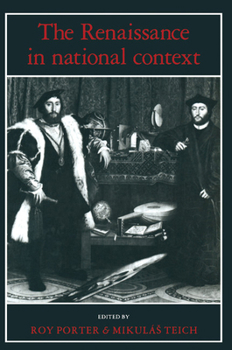The Renaissance in National Context
Select Format
Select Condition 
Book Overview
The book demonstrates that the revival of letters, and the generation of new currents in artistic expression, had many sources independent of Italy, meeting numerous local needs, and serving various local functions, specific to the political, economic, social and religious climates of particular regions and principalities. In particular the authors emphasize that while the Renaissance was in a fashion backward looking, recovering the culture of Greece and Rome, it nevertheless served as the springboard for many specifically modern developments, including the diplomacy of the 'new princes, ' the spread of education and printing, the growth of nationalist feeling and the birth of the 'new science'. Bridges of cultural transmission are given equal emphasis with the barriers which were to generate increased separation of linguistic and cultural domains. Three essays on major Italian centres do moreover demonstrate that the diversity of the Renaissance applies to the peninsula no less than to the rest of Europe.





